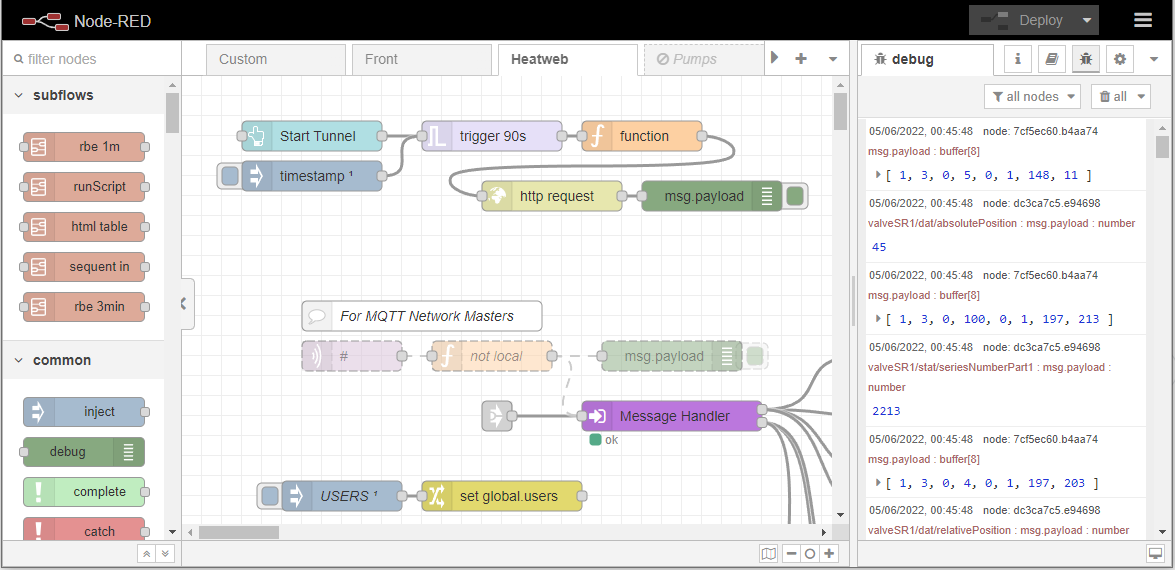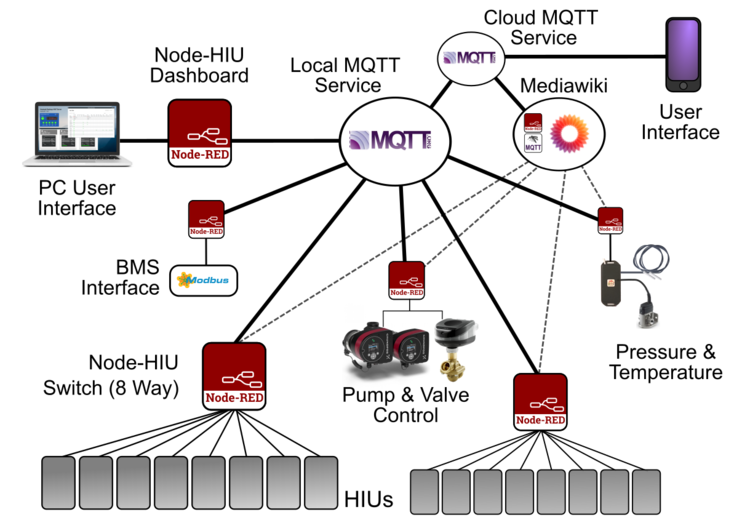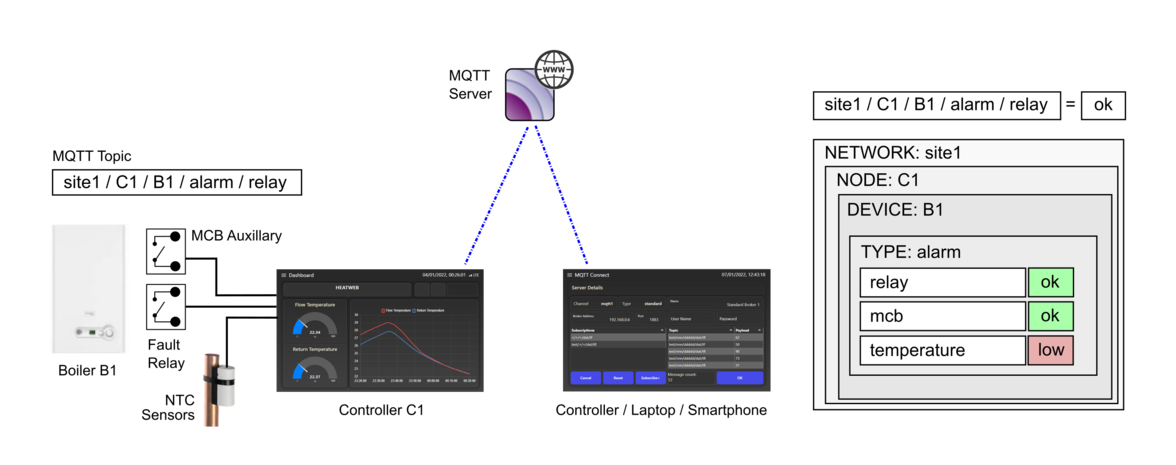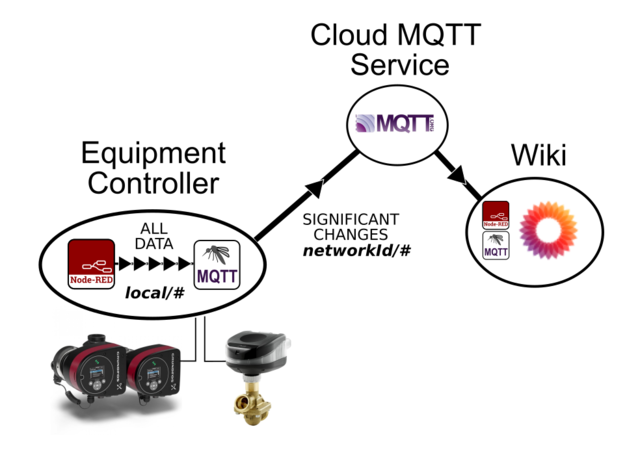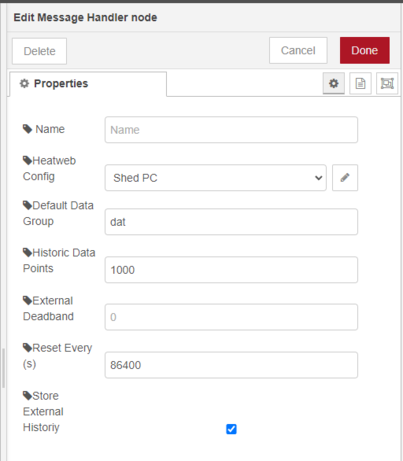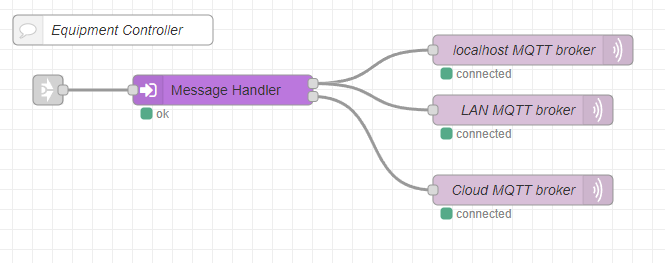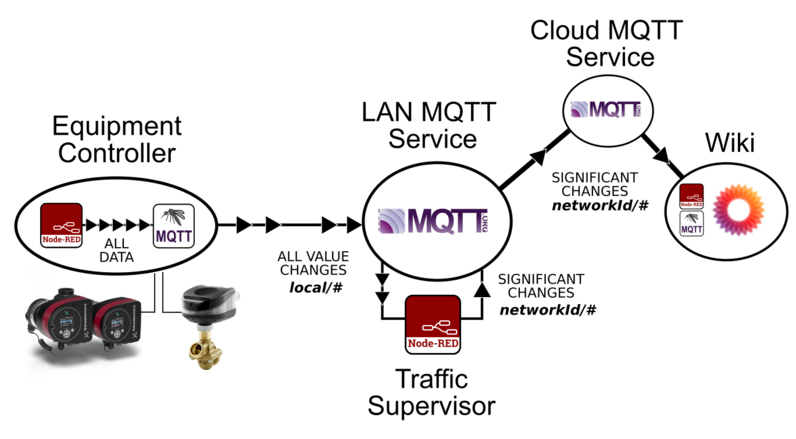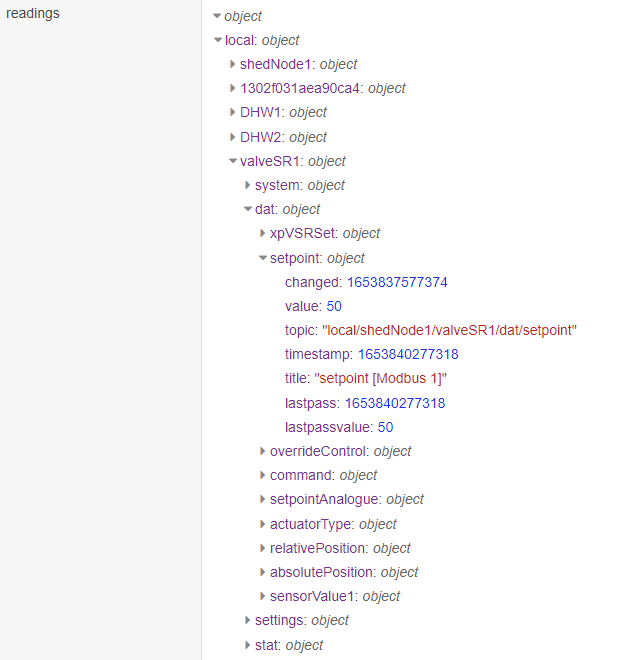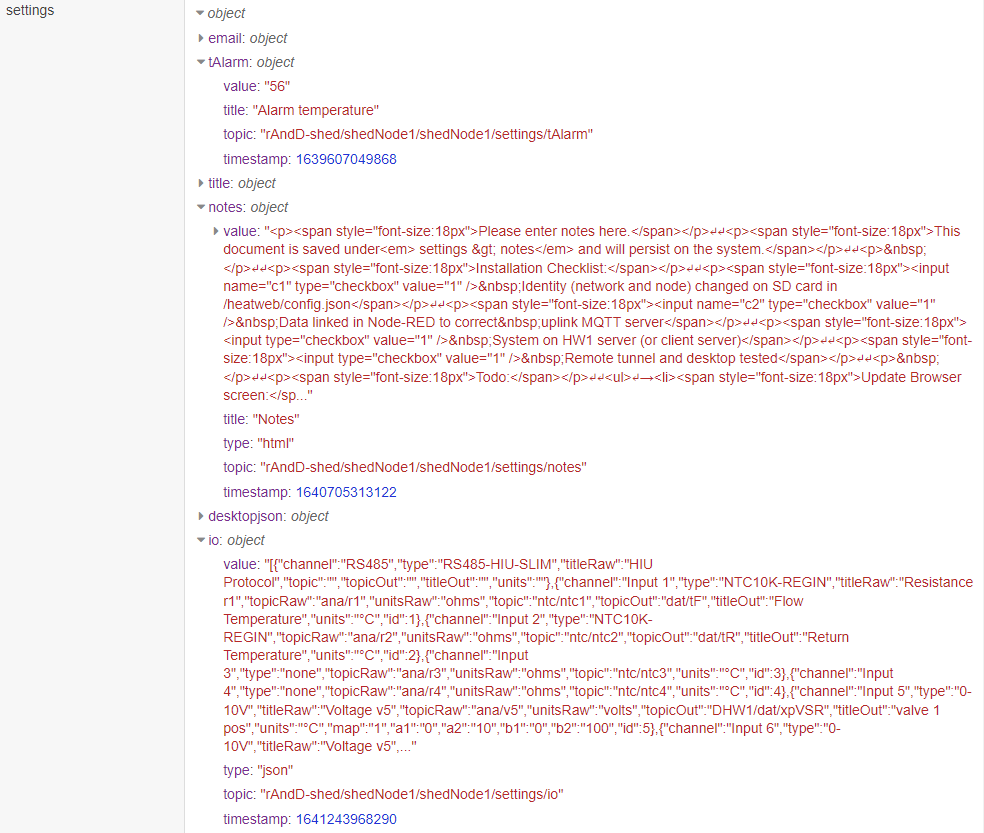Difference between revisions of "Open Control Architecture"
| Line 73: | Line 73: | ||
*'''''pcdb''''' (pcdb data) | *'''''pcdb''''' (pcdb data) | ||
*'''''design''''' (preloaded design data) }} | *'''''design''''' (preloaded design data) }} | ||
{{Block | Attributes for data | {{Block |Attributes (metadata) provide additional information about data, such as units and a description. They include: | ||
* '''''units''''' (units for data) | |||
* '''''title''''' (short description) | |||
* '''''deadband''''' (the deadband used for external communications) | |||
* '''''timestamp''''' (unix time data is handled) | |||
* '''''changed''''' (unix time data last changed)}}{{Block |Attributes are generally loaded from a central index (GitHub or LAN hosted), providing additional information such as units and descriptions. This is to avoid the need to locally describe data, and to assist in compatibility. Custom attributes may be added inline to messages and will override defaults.}} | |||
== Node-RED Global Objects == | == Node-RED Global Objects == | ||
Revision as of 00:29, 5 June 2022
Basic Architecture
A node can be:
- a function block within Node-RED
- an instance of Node-RED
- any point (server or device) in the communications network
Communications
myNetwork/plantroomNode/plantroomNode/system/title= "Main Plantroom Controller"
block1/blk1node/blk1node/system/title= "Block 1 Controller"
Adding a prefix to sub-networks ensures networks remain unique on a higher level server. E.g. There may be two unconnected networks with sub-networks called "block1".
myNetwork-block1/blk1node/blk1node/system/title= "Block 1 Controller"
anotherNetwork-block1/blk1node/blk1node/system/title= "Block 1 Controller"
Handling Data
- The Node has two outputs - one for local traffic, and one for external traffic.
- Report by exception rules are applied to external traffic.
- The Node formats topics to the five level standard, adding group and device if missing.
- The Node stores data into global.readings, along with any attributes within the incoming message, as well as timestamps.
- Additional routing can be performed within Node-RED, including selection of retained vs fire & forget routes.

Handler Nodes use a configuration node to store setup information including network and node identities.
Data Groups & Attributes
- dat (operational data)
- stat (statistics and status)
- settings (persistent settings)
- cmd (a command)
- set (command to change a setting)
- system (software and networking)
- meter (meter data)
- alarm (alarms and warnings)
- ana (analogue readings)
- pcdb (pcdb data)
- design (preloaded design data)
- units (units for data)
- title (short description)
- deadband (the deadband used for external communications)
- timestamp (unix time data is handled)
- changed (unix time data last changed)
Node-RED Global Objects
The current data can be viewed in the data explorer.
Settings have a type, may have maximum and minimum values, units and a title. Certain types require additional fields such as select from a list settings.
The snapshot below shows a variety of setting types including numeric/text values, html, or JSON objects and arrays.
e.g. a message with a topic myNetwork/node123/myDevice/dat/outputTemperature would be stored in (global).readings.myNetwork.myDevice.dat.outputTemperature.value
Internally, message topics can be truncated and the network and node will be filled in. The data group will be assumed to be "dat" if not supplied, representing operational data.
e.g. a message with a topic setpoint would be stored in (global).readings.local.myNode.dat.setpoint.value
The following code could be used to read data and its attributes for output.
var localNetworkId = global.get("localNetworkId");
var node = global.get("node");
var reading = global.get("readings." + localNetworkId + "." + node + ".dat.outputTemperature");
var output = "The value of " + reading.title + " is " + reading.value + reading.units;
// "The value of Output Temperature is 35°C
